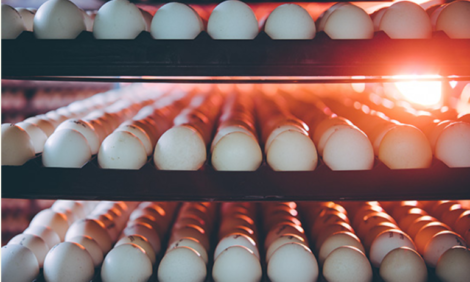



Reducing Competition Between Livestock and Humans for Food
ANALYSIS - Reducing the amount of animal feed grown on crop land could have a positive effect on the availability of food and have a positive environmental impact by cutting greenhouse gas emissions.A study by the Research Institute of Organic Agriculture shows that cutting concentrate feed can be an alternative way to ensure food security in a climate friendly way.
The research report published in the scientific journal of the Royal Society Interface says that increasing efficiency in livestock production and reducing the share of animal products in human consumption are two strategies to curb the adverse environmental impacts of the livestock sector.
However, it says that sustainable livestock production can be achieved by reducing feed components that compete with direct human food crop production.
It says that if animals are fed only from grassland and by-products from food production sufficient food could be produced to meet the rising demands for human food while at the same time cutting the environmental impact.
The study shows that cuts in greenhouse gas emissions of up to 18 per cent could be achieved, while the use of arable land for feed could be cut by 26 per cent.
Nitrogen surplus could fall by 46 per cent, phosphorous by 40 per cent and non-renewable energy use by 36 per cent.
It would also mean that the use of pesticides could be cut by 22 per cent, the use of water would be down by 21 per cent and soil erosion would be cut by 12 per cent.
The report says that these results could occur despite the fact that environmental efficiency of livestock production is reduced.
“We show that such a strategy focusing on feed components which do not compete with direct human food consumption offers a viable complement to strategies focusing on increased efficiency in production or reduced shares of animal products in consumption,” the research team says.
The study adds that by reducing the production of concentrate feed, more plant-based food can be produced while also protecting the environment and reducing GHG emissions.
Calculations show that the number of animal products in human diets would decrease by 53 per cent if feed production on cropland were to be reduced. This would mostly concern pork, poultry and eggs.
The researchers from FiBL, the FAO, the Alpen-Adria University in Vienna and the University of Aberdeen looked at a number of scenarios for food production and the impact on the environment.
The study says that it is not necessary to intensify food production to meet future demands as the global population grows.
“We show that a food system with ruminant- and grassland-based animal products can provide enough food while reducing environmental impacts. Furthermore, grasslands can contain large carbon stocks and can provide many ecosystem functions, much of which would be lost if grassland were converted to arable land,” the study says.
It adds that despite roughage-fed beef or milk having a higher carbon footprint than products from intensive, concentrate-fed cattle systems, or even pig and poultry, if no food competing feedstuffs are used, a more sustainable food system is achieved.
The research says that reducing the consumption of monogastric livestock products would be much more drastic than for ruminant meat.
“Reducing the amount of human-edible crops that are fed to livestock represents a reversal of the current trend of steep increases in livestock production, and especially of monogastrics, so would require drastic changes in production and consumption. Achieving such drastic changes is a huge challenge for society,” the study concludes.
The full study can be found at http://rsif.royalsocietypublishing.org/content/12/113/20150891








